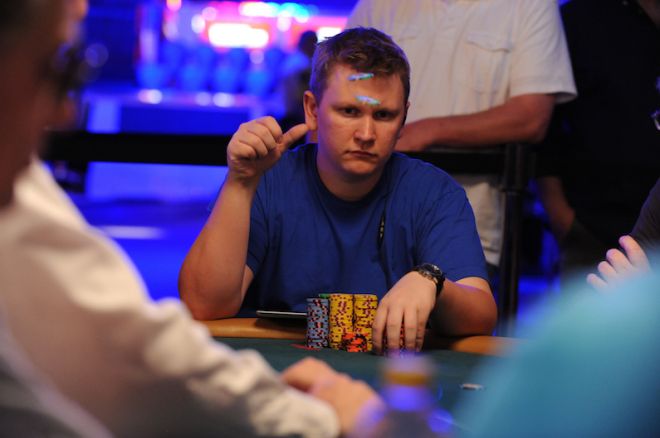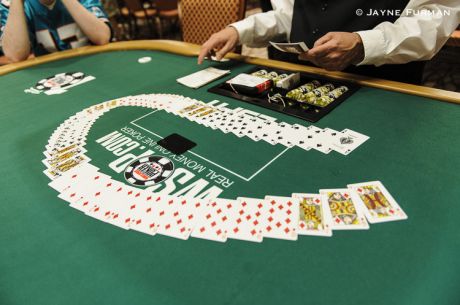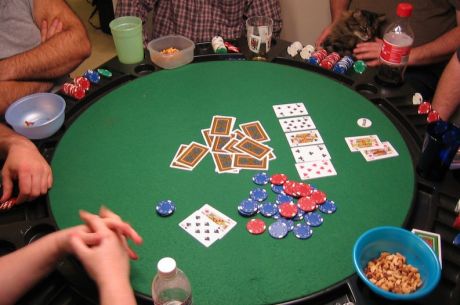Why a Cheap Flop Is So Tempting -- and Why You Should Resist

John Vorhaus is the author of many poker aphorisms that I’ve found useful. I think my favorite of them is this, from a 2008 Card Player magazine column: “There’s nothing more expensive than a cheap flop.”
It’s a memorable observation because it’s both paradoxical and true.
Let me illustrate with a hand from a home game I was in just a few days ago. It’s a cash game, all no-limit hold’em, ten players, with a $20 buy-in and blinds of just $0.20/$0.20, no rake. It’s completely casual, and played more for fun and sociability than for serious money.
I was in the big blind, with 10x3x-offsuit. The woman to my left put out a straddle ($0.40) before the cards were dealt. Nobody raised, so I chucked in one more of the smallest-denomination chips. I think there were seven people to the flop. Yeah — it’s that kind of game.
The flop was Kx10x3x-rainbow. Somebody bet. The woman to my right raised. I reraised. Now players started dropping out, all except the raiser. She moved all in and I called. She had Kx10x — top two pair to my bottom two pair, leaving me drawing to just two outs, which did not come.
You might reasonably question whether I should have called the last raise. Against some players, it would indeed be just giving away money. This particular woman, though, habitually overplays top pair, and her all-in bets are more often “go away” scare-bets with one pair than genuine strength.
But even if the last call was justified due to the playing style of that specific opponent, there’s more to be learned about the general principle, which is that cheap flops can end up costing you a ton later in the hand when you get stuck in second-best situations.
How can you avoid that kind of mess? As a poster once memorably said on Two Plus Two long ago, it ain’t rocket surgery.
Let’s go back to the preflop action and consider the two alternatives to my initial call of the straddle.
Conventional wisdom about aggressive, winning poker says that calling is usually the worst option when facing a bet. We should first look to see if there is a good reason to raise; if not, then see if there is a good reason to fold. Only if the answer to those questions is “no” should we consider calling.
Applying that dictum to the hand in question, could I have raised? Sure. We have one guy in that game who will nearly always put in a bet of $4-$5 if he is in the big blind or has straddled, if the action gets back to him without having been raised, and doing so usually wins him the pot uncontested. I could have done the same thing. The fact that I make such a move so rarely means that I would likely be given even more credit for a big hand than that guy gets.
Would it have folded out the field? It well might have. Obviously, nobody had a hand big enough to submit a raise, and it’s clear from the subsequent action that nobody was lying in wait with a monster, planning the ol’ limp-reraise.
In fact, Kx10x is exactly the kind of hand that might be most likely to decide not to proceed, because of the fear of being up against AxAx, KxKx, or AxKx, with very little chance of winning against those holdings.
Perhaps somebody with a medium pocket pair or suited connectors would have decided to call a big preflop raise, especially knowing they would have position on me after the flop. But it’s clear in retrospect that a continuation bet on the flop would have won it.
Of course, it’s uncomfortable to submit a big raise with a garbage hand like 10x3x-offsuit, especially from bad position. But playing only within your comfort zone means that you’re fully predictable and exploitable, as soon as an attentive opponent has watched you long enough to define where the edges of your comfort zone lie.
Still, it’s a risky maneuver, and it’s perfectly reasonable to decide not to take that route. So what’s the next choice on the list? A fold. I could have just flicked my cards forward a few inches, surrendered my 20-cent chip, and been done with the hand.
The justification for folding is that 10x3x-offsuit is just a terrible, terrible starting hand. It has only about half the equity (or chance of winning the pot) as the average of all starting hands. If you plug it into a hand evaluator like PokerStove along with nine random hands, it will tell you that 10x3x has about 5.9% equity, while each of the random hands has around 10.4%.
Even with a discounted price to call because of having already paid the big blind, the extra chip I put in was barely a break-even proposition. Against a table full of purely casual players, I can surely get my money in with better expected return than that.
The temptation of a cheap flop is that it feels like a low-cost, high-potential-return move. The reality, though, is that it’s usually the worst of your three options.
The next time you hear the voice in your head telling you to put in just a little bit of money to see the next three cards, stop. Consider instead whether circumstances are right for a raise. If not, then consider folding. Don’t succumb to the allure of the cheap flop. It might end up being a lot more expensive than you think.
Robert Woolley lives in Asheville, NC. He spent several years in Las Vegas and chronicled his life in poker on the “Poker Grump” blog.
Want to stay atop all the latest in the poker world? If so, make sure to get PokerNews updates on your social media outlets. Follow us on Twitter and find us on both Facebook and Google+!








